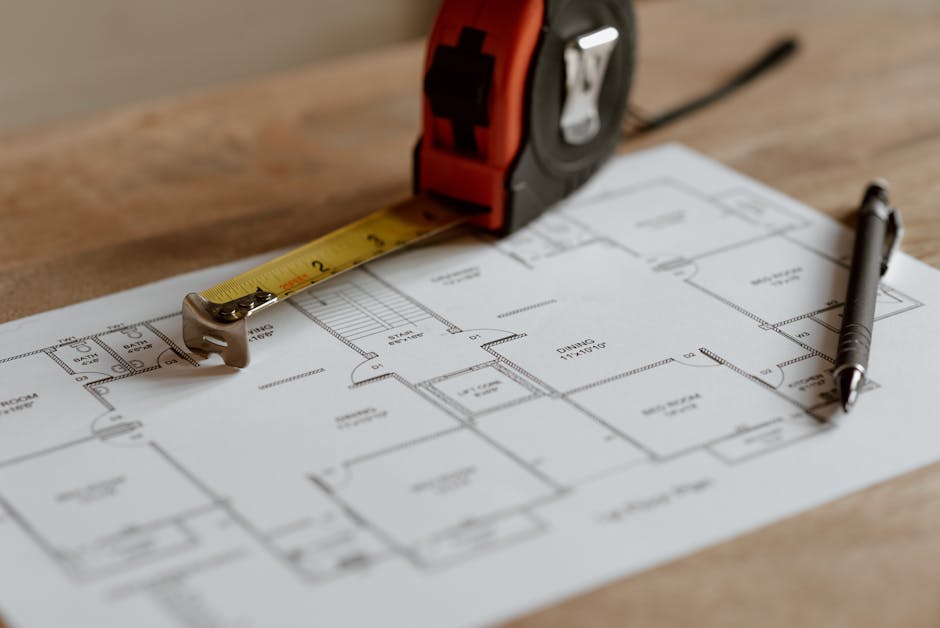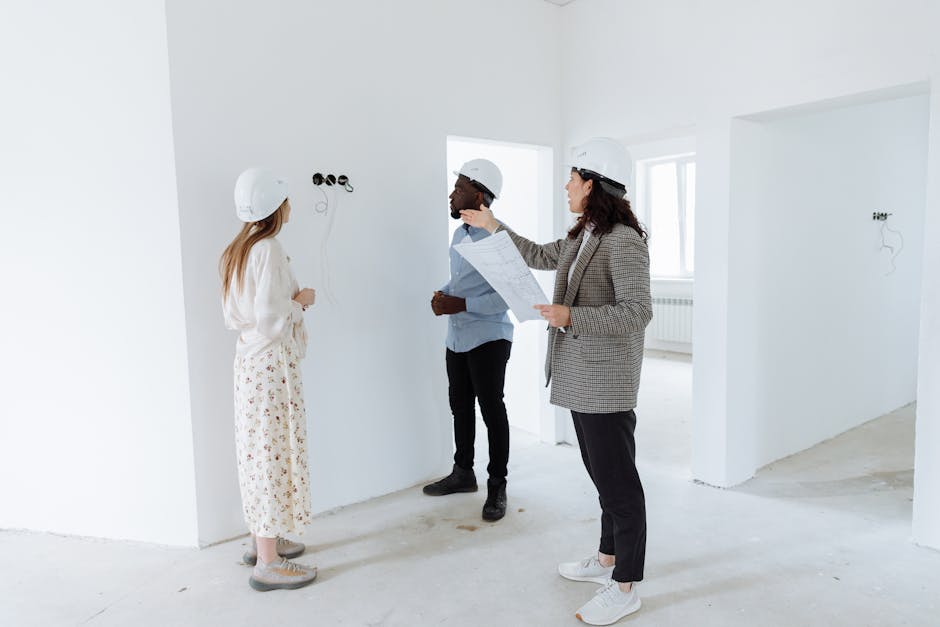What Is Design-Build?
A design-build project is different from traditional construction projects in many ways. While both have an initial planning phase, followed by execution of the blueprint, designers typically don’t work directly with contractors or builders.
Instead, they create concepts for the space and talk to you about what materials look good together and which ones can be integrated into your home. Then they turn those ideas into functional designs that are perfect fits for the space!
After the plan is approved, the designer works with their partners – either another member of the design team or outside vendors — to bring those ideas to life.
Designers usually keep themselves separate from the rest of the project until it's done, since their careers tend to move quickly (we refer to this as being in “the industry"). This way, they don't get attached to individuals or companies working on the project, so things stay professional and seamless for all.
That said, when the project is completed, there will often be a party or event hosted by one of the involved teams - the architects invite everyone to celebrate success, while the interior designers organize drinks and snacks for people.
Examples of design-build
Many large corporations have a project management team that includes both designers and builders. These teams are typically made up of individuals with different skillsets, but who work together to ensure the success of an upcoming project.
Designers focus on giving the space a sense of flow and consistency, while also incorporating beautiful patterns and textures.
Architects take care of the spatial relationships between elements in the building or room, as well as how best to use your natural light.
By having these two key components work seamlessly together, it creates a feeling of tranquility. A feeling that comes from using their services is one where you feel comfortable being totally focused on what you do because everything is designed with efficiency in mind.
This way of working was first popularized in the United States during the 1980’s when big name companies would hire only design architects and builders to work together on projects. Since then, it has spread across every continent!
Nowadays, there are even some countries which require this type of collaboration to get construction permits. It is very common for both professionals to collaborate beyond just their departments. For example, a builder might need help designing a kitchen or a designer may ask for the specs of a wall.
It is not uncommon to find members of each department crossing over into others’ areas, taking advantage of all they can offer.
Process of a design-build project

A design-build project is different from traditional building projects that have you pick your materials and styles yourself. With a design-build project, professionals do all of that for you! They take care of everything — interior and exterior designs, site scouting, property negotiations, and then they get to work taking what they designed and producing it.
Design builders are usually very familiar with their designers’ style so they can easily translate those colors into reality. It also helps that they are in the construction business so they know how to source quality products and materials.
Their expertise comes together to create beautiful buildings that match the initial vision. As architects, we sometimes lose touch with the importance of keeping things simple. Having someone else handle the pretty decorations really highlights this.
It is important to remember that while the builder handles the nuts and bolts, there should be an architect present during the process to make sure everything goes according to plan. This way you will save time by having them take care of some of the tedious tasks.
Cost differences between a design and a design-build project
When you hire a designer to create new looks for your home, it is typically referred to as a design project. They may also suggest or include some renovations in functionality of an existing feature or space.
A design project can sometimes be expensive due to the length of time it takes to complete. It’s not uncommon to start looking at a house after work hours and end up leaving early because there are just too many things to do!
When budgets run low, the best solution is usually to pick and choose small projects that can easily be done in a short amount of time to preserve money. This doesn’t always go according to plan, however.
As designers gain experience, they learn how much of a budget must be allotted for certain features before they can begin working. There may even be times when a feature needs to be redesigned completely, taking away part of the savings.
Design-builders offer another cost effective option to creating and designing interior spaces. Because they don't have a set budget, they're able to spend more time focusing on important aspects of a room while also saving money.
Some people believe this style of architecture/design isn’t very professional and wants nothing less than perfection when it comes to decorations and layouts.
Who should hire a design-build company
As discussed, project managers who are not in charge of keeping the designer and builder in check can sometimes hinder the process. If you are ever asked to do something that goes against your moral compass or personal style philosophies, it may be time to look for new jobs.
Designers and builders have their own set internal styles they believe in which can conflict with yours. This is totally normal!
If this happens once, maybe you can work through it. But if it keeps happening, then it’s probably best to find someone else to help manage your projects.
Project Managers are only there to keep the designers and the builders under control. So unless you want to suffer more than yourself, try to see things from both sides before calling it a day.
As always, stay within the parameters of the job and don’t get carried away with all the bells and whistles. Keep it simple, classic, and professional.
Tips for designing a home
One of the most popular design styles is called design build. This style is becoming increasingly common as people become more aware of it. It was originally coined in the 1980s when large corporations started using this approach to building or remodeling their facilities.
Now, you can find many homes and buildings that use this design theory. Some call it “post and beam” construction, which refers to the horizontal beams used in the design. The designer creates the look of the house or room, and then builders add onto that by incorporating the vertical posts and the roof structure.
Designers are also trained in cost effective ways to do things. They know how to source materials efficiently and apply them properly to ensure good quality. And they have learned how to collaborate with other professionals such as architects, engineers, and contractors to make sure everything comes together correctly.
Overall, designers and builder team members work together to create a beautiful space that meets your budget and needs.
Tips for choosing a builder
When picking your project space, make sure you give enough room to work with both in terms of space and time. You want to be able to do your job without being interrupted!
As mentioned before, you will need somewhere to store all your materials so that you can go back to them later. This could be a designated area or indexing system depending on how much material you have and what type it is.
Also, look into if the builders association has any certification or memberships. These show that they are professional and trained in their field which is very important when getting supplies and doing jobs.
Getting started with design-build

A project may enter into design-build mode at any stage of construction, usually after significant investment has been made in materials or space. As such, it is very important to consider how much additional money you will need before deciding if this service is right for your home renovation.
Design builders offer their clients a cost effective alternative to general contractors. They take care of all the logistics of the job, from finding new vendors to negotiating contracts to even taking charge of the site while the builder works on other projects!
General contractors typically handle more than one designer per project, which can result in overpaying due to competition or both parties having to renegotiate fees as the project moves forward. This is not the case with design-builders, who are usually able to negotiate lower costs overall because they work alone.
There are also no set rules about when design build becomes too expensive. It really depends on what changes are being asked for and whether or not those requests make sense.
Design considerations
When working with design-build, there are two main teams that make up the process. Teams of architects and designers work together to come up with initial concepts for the space, and then project managers (or owners) choose which designs these people will implement into your final product.
The professionals on both sides typically have their own specialties they hone during the course of their career. For example, an architect may specialize in industrial spaces or academic settings, while a designer may focus more on residential projects.
Because design-builders get to collaborate with both types of experts, this team is sometimes referred to as “collaborative professional”. This term may not sound very impressive, but it really emphasizes how valuable this type of practice is for clients!
By having separate departments handle different parts of the project, each one comes away with something unique. Architects gain experience designing new shapes and structures, while creative specialists develop skills like color theory and pattern mixing. Both of these are important fundamentals that anyone in the design industry should know!
Designers also learn about communication styles and strategies when it comes to presenting ideas to other individuals. These things can be tough at times, so being able to access those resources can help you out a lot!
For instance, if someone else has done some research on similar topics, they might share that information with you and let you add what you want to take from it.

